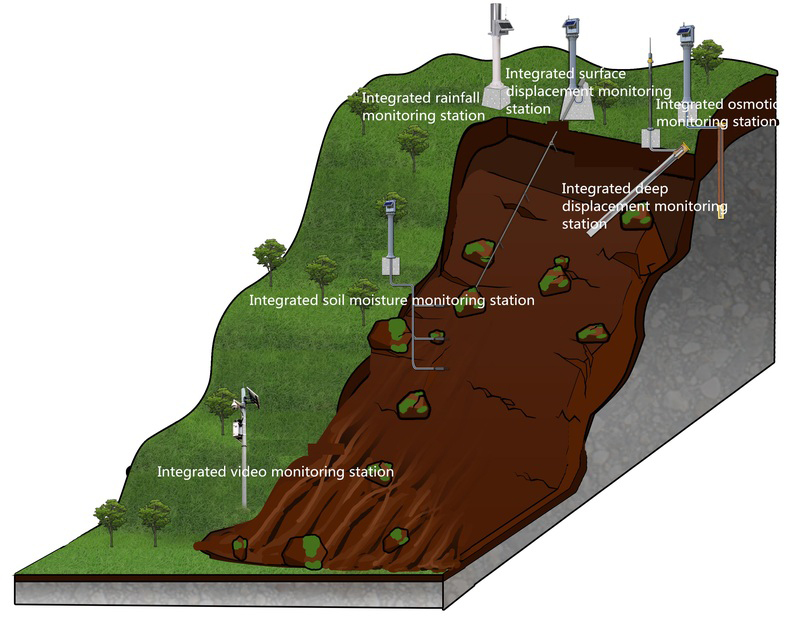I. Project Background
As an archipelagic country in Southeast Asia, the Philippines is frequently affected by monsoon climates and typhoons, leading to recurrent flash flood disasters. In 2020, the National Disaster Risk Reduction and Management Council (NDRRMC) initiated the “Smart Flash Flood Early Warning System” project, deploying a real-time monitoring network based on multi-sensor integration in high-risk areas of northern Luzon.
II. System Architecture
1. Sensor Network Deployment
- Weather Radar System: X-band Doppler radar with 150km coverage radius, updating rainfall intensity data every 10 minutes
- Flow Sensors: 15 ultrasonic flow meters deployed at critical river sections, ±2% measurement accuracy
- Rainfall Monitoring Stations: 82 telemetric rain gauges (tipping bucket type), 0.2mm resolution
- Water Level Sensors: Pressure-based water level gauges at 20 flood-prone points
2. Data Transmission Network
- Primary 4G/LTE communication with satellite backup
- LoRaWAN for remote sensor networking
3. Data Processing Center
- GIS-based warning platform
- Machine learning rainfall-runoff model
- Warning information dissemination interface
III. Key Technical Applications
1. Multi-source Data Fusion Algorithm
- Dynamic calibration between radar rainfall data and ground rain gauge data
- 3D variational assimilation technology to improve rainfall estimation accuracy
- Bayesian theory-based probabilistic warning model
2. Warning Threshold System
| Warning Level | 1-hour Rainfall (mm) | River Discharge (m³/s) |
|---|---|---|
| Blue | 30-50 | 80% of alert level |
| Yellow | 50-80 | 90% of alert level |
| Orange | 80-120 | Reaching alert level |
| Red | >120 | 20% above alert level |
3. Warning Information Dissemination
- Mobile APP push notifications (78% coverage rate)
- Automated community broadcast system activation
- SMS alerts (for elderly population)
- Synchronized updates on social media platforms
IV. Implementation Results
- Improved Warning Timeliness: Average lead time increased from 2 hours to 6.5 hours
- Disaster Reduction Effectiveness: 63% decrease in casualties during 2022 typhoon season in pilot areas
- Data Quality: Rainfall monitoring accuracy improved to 92% (compared to single-sensor systems)
- System Reliability: 99.2% annual operational rate
V. Challenges and Solutions
- Unstable Power Supply:
- Solar power systems with supercapacitor energy storage
- Low-power sensor design (<5W average consumption)
- Communication Interruptions:
- Multi-channel automatic switching technology
- Edge computing capability (72-hour offline operation)
- Maintenance Difficulties:
- Self-cleaning sensor design
- UAV inspection systems
VI. Future Development Directions
- Introduction of quantum radar technology for small-scale rainfall monitoring
- Deployment of underwater acoustic sensor networks for debris flow precursor detection
- Development of blockchain-based warning information certification system
- Community participatory “crowdsourcing” data verification mechanism
This project demonstrates the synergistic effects of multi-sensor integration in flash flood warning systems, providing a replicable technical framework for disaster monitoring in tropical island nations. It has been listed by the World Bank as a disaster reduction demonstration project for the Asia-Pacific region.
Complete set of servers and software wireless module, supports RS485 GPRS /4g/WIFI/LORA/LORAWAN
For more sensor information
please contact Honde Technology Co., LTD.
Email: info@hondetech.com
Company website: www.hondetechco.com
Tel: +86-15210548582
Post time: Aug-12-2025


